|

 Up
Up 
 The Wright
The Wright
TriaNgle

(You are here.)



  Need
to Need
to
find your
bearings?
Try
these
navigation aids:
If
this is your first
visit, please stop by:
Something
to share?
Please:



|
|
Crunching the Numbers
 he
key that unlocked the secret of flight was a triangle – specifically, a
right triangle. That is, a triangle with one "right" or 90 degree
(°) angle. Over three thousand years ago, Babylonian astronomers found
that by using right triangles they could predict the motions of the sun
and moon. About 160 BCE, the Greek astronomer Hipparchos organized these
predictive methods into a mathematic system. Later Arabic astronomers
shaped it into an entire branch of mathematics that became known as
trigonometry. It was first used exclusively to solve problems in
astronomy, but scholars quickly found that it also had applications in
geometry, navigation, architecture, and by Orville and Wilbur's time,
physics. Wilbur, in fact, took a college-prep course in trigonometry
while he was still thinking of attending Yale. he
key that unlocked the secret of flight was a triangle – specifically, a
right triangle. That is, a triangle with one "right" or 90 degree
(°) angle. Over three thousand years ago, Babylonian astronomers found
that by using right triangles they could predict the motions of the sun
and moon. About 160 BCE, the Greek astronomer Hipparchos organized these
predictive methods into a mathematic system. Later Arabic astronomers
shaped it into an entire branch of mathematics that became known as
trigonometry. It was first used exclusively to solve problems in
astronomy, but scholars quickly found that it also had applications in
geometry, navigation, architecture, and by Orville and Wilbur's time,
physics. Wilbur, in fact, took a college-prep course in trigonometry
while he was still thinking of attending Yale.
|
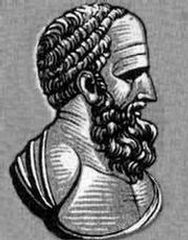 Hipparchos,
the "father of trigonometry," is also considered to be one of history's
greatest astronomers. Scientists often rank him with the likes of
Copernicus, Galileo, and Edwin Hubble. Hipparchos,
the "father of trigonometry," is also considered to be one of history's
greatest astronomers. Scientists often rank him with the likes of
Copernicus, Galileo, and Edwin Hubble.
|
A Trig Primer
It's a dead-simple system. At its heart is a single precept: If you add
the angles at the corners of a triangle, you always get 180° (Figure
1). In a right
triangle, you know that one corner is always 90°. Since 180 minus 90
equals 90, the other two corners or complimentary corners, must
total 90°. So if you know the angle of just one complimentary corner,
you can always find the angle of the other simply by subtracting the
angle you know from 90°. For example, if one of the complimentary angles
in a right triangle is 60°, the other must be 30°: 90 - 60 = 30
(Figure 2).
Hipparchos took this a step further. He knew that the shape of a right
triangle is determined by its complimentary angles. And as long as those
angles don't change, this shape always remains proportionate no matter what the size of the triangle.
Another way to say it is that for any one set of angles, the sides of a
right triangle are always the same ratios
to one another. If you know these ratios, and you know the length of one
part, you can use the ratios to find the length of the other parts. For
example, if you know that one side of a right triangle is half as long
as another (a ratio of 1 to 2, or 1/2), and you know that the longer side is 10
inches long, then it is a simple matter to figure that the shorter side
is 5 inches: 1/2 x 10 = 5.
Because the shape of the triangle varies with different complimentary
angles, so do the ratios. In fact, there are a different set of ratios
for every angle between 0° and 90° and each angle has three major ratios
called the sine, cosine, and tangent. These ratios
are figured by dividing the length of one side into another. Which side
gets divided by what is determined by the position of the sides in
relation to the complimentary angle to which the ratio belongs. The side
opposite the angle is the opposite side. The remaining side, the
one that is part of the complimentary angle, is the adjacent
side. The side immediately opposite the right angle is always the
hypotenuse. The angle itself is often represented by the Greek
letter theta or Θ (Figure 3).
- The sine of an angle (Θ) is the opposite side
divided by the hypotenuse: sinΘ = opposite/hypotenuse
- The cosine of angle Θ is the adjacent side divided
by the hypotenuse: cosΘ = adjacent/hypotenuse
- The tangent of angle Θ is the opposite side
divided by the adjacent: tanΘ = opposite/adjacent.
Hipparchos gathered the ratios for each angle into lists or tables
of sines, cosines, and tangents. With these tables, he could calculate
the length of any side of a right triangle as long as he knew one
complimentary angle and the length of one other side. For example, if he
needed to find the length of the opposite side of a triangle where the
known complimentary angle was 30° and the length of the hypotenuse was 5
inches, all he had to do was look up the sine of 30° and multiply it
times 5. The sine of 30° is 0.5: 0.5 x 5 = 2.5 (Figure 4).
And that is the most important idea to take away from this overview. Even if you didn't understand all that stuff about ratios,
remember that all you need to know is one angle and one
measurement to discover all the remaining angles and measurements of a
right triangle. Early aeronautics was built on that simple
premise.
Measuring Lift and Drift
Early in the nineteenth century,
Sir George Cayley defined the forces
of an airplane in flight. The lift generated by the wings must
overcome gravity; thrust must overcome drag to
propel the aircraft through the air. The sketches in Cayley's notebooks
and publications show the forces of lift and drag acting perpendicular
to one another. One of his earliest drawings, etched on a silver disc in
1799, represents lift and drag as the sides of a right triangle.
Cayley referred to drag as "resistance," the Wright brothers called
it "drift." They could see the results of lift and drift every time they
flew one of their scientific kites. The vertical distance of the kite
above the ground was due to lift, while the horizontal distance from the
operator to the kite was due to drift. And the hypotenuse of the
lift-drift triangle was traced by the tether string of the kite.
At some point in his kite experiments, it occurred to Wilbur that the
tension on the tether was the direct result of the combined forces of
lift and drift. If he measured that tension and the angle of the
tether above the horizon, he would have one complimentary angle and the
magnitude of the hypotenuse formed by these forces. And he could use
these measurements, along with a table of sines and cosines, to find the
precise lift and drift acting on the kite as it flew.
This is why the Wrights flew their gliders as kites at Kitty Hawk.
Using an inclinometer, they measured the angle of the tether
lines. They measured the tension on these lines with a spring scale,
such as the fishermen of Kitty Hawk used to weigh their catch. They also used the scale to weigh the glider. The Wrights needed the
glider weight to compensate for another force in play – gravity.
The lift-drag triangle manifested by the glider in flight actually
revealed the excess lift, the lift over and above what was needed
to overcome gravity and fly the glider. To find the total lift, the Wrights would have
to add the glider weight to the excess lift.
They also borrowed an anemometer from
Joseph Dosher at the Kitty Hawk Lifesaving Station to measure the wind
speed. The tension on the tether lines, they knew, would vary with the
wind speed. The fiercer the wind, the greater the tension. The forces of
lift and drift would increase proportionately with the wind.
Once they had all these measurements, they
simply applied a little trigonometry.
- The excess lift (the opposite leg of the triangle) was the sine
of the angle times the tension on the tether. The total lift
was the excess lift plus the weight of the
glider: (sinΘ x tension) + glider weight
= lift.
- The drift or drag (the adjacent side of the
triangle) was the cosine of the angle times the tension: cosΘ
x tension = drag.
This may have seemed like a simple exercise to Wilbur and Orville, but
it was a groundbreaking development in aeronautics. For the first time,
scientists measured the performance of an aircraft in flight and
compared it to laboratory results – in this case, the results from
Lilienthal's whirling arm experiments. In the estimation of the Wright
brothers the 1900 glider was a failure, able to support the weight of a
pilot only in extremely high winds. But failed or not, the results of
their experiments pointed them in the direction of eventual success.
|
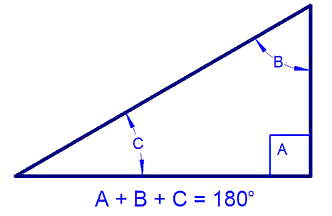
Figure 1
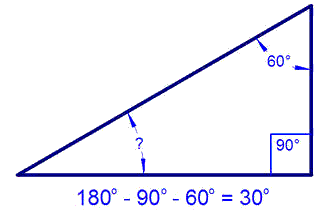
Figure 2
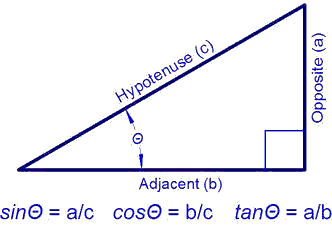
Figure 3
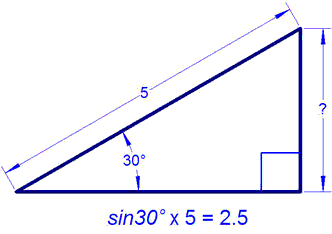
Figure 4
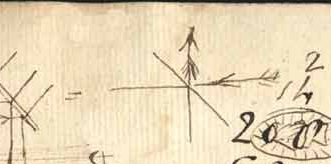
This doodle from Cayley's notebooks shows the forces of lift and drag
acting perpendicular to one another.
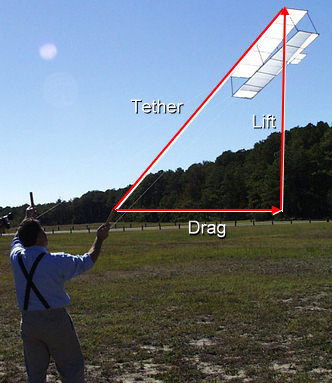
The lift-drag triangle that is formed when you fly a kite.
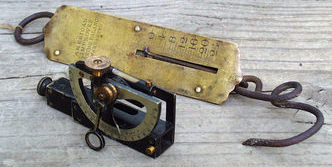
A spring scale (top) is a common tool to measure weight or tension. The
inclinometer (bottom) was developed by surveyors to measure slopes and
angles.
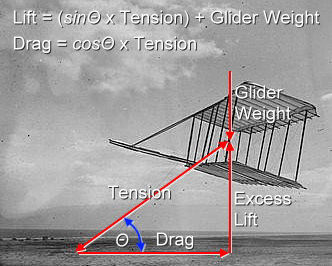
The Wright brothers calculated the lift and drag of the 1900 glider at
different wind speeds and different "angles of attack." The angle of
attack is the angle of the wing chord to the direction of the wind.
|